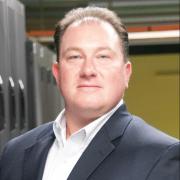Thermal Containment System
Energy efficiency is an area of concern for organizations concerned with cost control and environmental impact resulting from an expanding carbon footprint due to fossil consumption. No matter the reason, conserving energy is a good thing. Data center operators are no strangers to this area of concern.
One way data centers manage energy consumption is to focus on Power Usage Effectiveness (PUE) associated with the computer room air conditioning (CRAC) system. Typically, information technology (IT) equipment found in modern data centers takes in cold air from the front and exhausts the hot air out of the back. Therefore, it is logical for data center designers to create cabinet layouts that align the rows with the front of the cabinets all facing the same direction, allowing for a consistent airflow direction through the cabinet and the equipment racked inside.
This cabinet configuration and equipment installation creates associated hot (exhaust) and cold (intake) aisles. To maximize the efficiency of this design, cabinet rows, along with the cold/hot aisle, are typically aligned perpendicular to the installation of the CRACs. This design technique contains airflow and prevents the mixture of hot and cold air in order to maximize the efficiency of the unit. Expedient has implemented a customized design for cold aisle containment with its proprietary thermal containment system (TCS) configuration.
This new design allows for the cold air to be trapped at the front of the cabinet, and then drawn through the IT equipment. Proper setting of static pressure under the floor, along with balancing the supply and the return air to the CRAC units is required to maximize the efficiency of the systems. Expedient deploys a network of temperature and humidity sensors through the data center and within the cold/hot aisles to provide feedback and trend analysis to our engineering team to continue to improve the system’s efficiency.
Expedient also utilizes the latest technologies from our equipment manufacturers to help control and monitor the airflow and function of the CRAC units. The CRAC units communicate with each other through feedback and control loop that allows them to synchronize operations to avoid over- or under-cooling the data center. This allows return air temperature to be automatically increased to the CRAC units to improve their efficiency. As the units approach a 10-15 degree delta T (the difference between the air temperature immediately before and after passing over the cooling coils), between the return and supply air, the efficiency and operations of the unit improves and the units operate at a steady state, reducing the need for the unit to cycle.
TCS has already achieved significant energy savings for Expedient. The company will continue to deploy the thermal containment systems throughout all data centers to minimize the carbon footprint and control cost to deliver maximum value for its customers.
